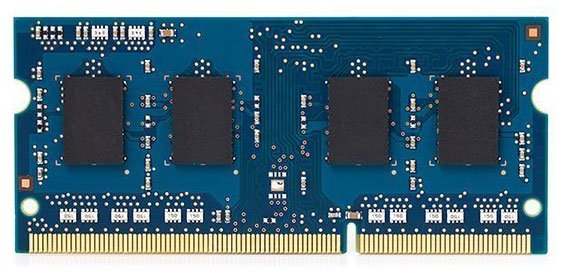What is DIMM (Dual In-line Memory Module)?
DIMM is a printed circuit board with integrated DRAM or SDRAM integrated circuits. Let's find out more about DIMMs through the following article.
What is DIMM?
DIMM (Dual In-line Memory Module) is a type of computer memory with 64 bits, allowing fast data transfer. DIMM is a module that contains one or several RAM chips (Random Access Memory) on a small circuit board with pins (pins) connecting it to the computer motherboard.
DIMM stores each data bit in a separate memory cell. DIMMs use 64-bit data paths, because the processor used in personal computers has a data width (the number of data bits that can be produced in the CPU at a given time) of 64 bits. DIMMs are commonly used in desktops, laptops, printers and other devices.
 DIMM
DIMM
SIMM (Single In-line Memory Module) usually has a 32-bit data path to the computer, requires a 72-pin connector. For SDRAM chips, which have 64 bits of data connection to the computer, SIMM must be installed in pairs, because each chip only supports 32 bit paths. A single DIMM may be used instead. Initially, the DIMM had a 168 pin connector to support 64-bit data transmission.
As faster DRAM (Dynamic Random Access Memory) was developed, the DIMM boards also improved. Modern DIMMs based on DDR4 SDRAM chips use 288 pin connectors to attach to the computer motherboard, allowing increased data throughput. As the clock speed of the RAM chip increases, the 64-bit path will process the increased amount of data.
Another improvement in DIMMs is the use of a heat sink or cooling structure attached directly to the DIMM. An increase in chip density in conventional 8GB or 16GB DIMMS, and an increase in clock speed, result in increased heat generation. This is made worse by the fact that DIMMs based on DDR4 RAM chips can be manufactured in capacities up to 64GB.
The cooling structure on the DIMM helps heat escape into the computer case, without affecting the motherboard and CPU.
Types of DIMMs
The most common standard DIMMs, with a common length of 5.5 inches (14cm) and height of 1.18 inches (3cm), are:
- Unbuffered DIMM (UDIMM) - Used primarily on desktops and laptops. Although they run faster and cost less, UDIM is not as stable as registered memory (RAM with a buffer between memory and bus to the CPU). The instructions go directly from the memory controller located in the CPU to the memory module.
- Fully-buffered DIMM (FB-DIMM) - Often used as main memory in systems requiring large volumes, such as servers and workstations. FB-DIMMs use AMB chips to increase reliability, maintain signal integrity, and improve methods for error detection. The AMB bus is divided into a 14-bit reading bus and a 10-bit write bus. Having a dedicated read / write bus means reading and writing can happen at the same time, which results in increased performance.
- Registered DIMM (RDIMM) - RDIMM is commonly used in servers, as well as other applications that require robustness and stability. RDIMM has on-board memory registers, which are located between the memory and the memory controller.
- Load-reduced DIMM (LR-DIMM) - Using iMB (Isolation Memory Buffer) technology The iMB chip isolates all electrical loads (parts or parts of the power consumption circuit), including the data signal of the DRAM chips on the DIMM from the memory controller. Therefore, the memory controller only sees iMB, not DRAM chips. The cache then processes all reads and writes to the DRAM chip, helping to improve capacity and speed.
 SO-DIMM
SO-DIMM - SO-DIMM - Although the standard DIMM has a rectangular shape with a length of about 14cm, the SO-DIMM is only about half the size, with a length of 2.74 inches (7cm). SO-DIMM is mainly used for devices like laptops and tablets. It differs from the standard DIMM in that the DDR4 SO-DIMM has 260 batteries (also the DIMM DRR4 has 288 batteries). Standard DIMM is used in PC and server. VLP DIMM was developed to meet the spatial requirements of blade servers.
 Learn about the CSEC ITSG-06 method
Learn about the CSEC ITSG-06 method Difference between NFC and RFID
Difference between NFC and RFID What is SIM-jacking?
What is SIM-jacking? What is a RADIUS Server? How does RADIUS Server work?
What is a RADIUS Server? How does RADIUS Server work? What is web scraping? What is Web Scraping used for?
What is web scraping? What is Web Scraping used for? What is UI UX? Differences between UI and UX design
What is UI UX? Differences between UI and UX design